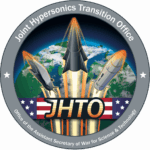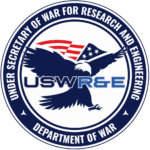By Texas A&M Engineering

For more than 70 years, aerospace engineers have demonstrated the knowhow to fly an object at hypersonic speeds.
That doesn’t make it easy, though.
It becomes especially difficult if you are building a hypersonic flight system, something engineered to maneuver in flight so that it arrives at a precise destination, regardless of what obstacles might be in its path.
That’s because the term “hypersonic speed” is not simply a cool way to say faster than Mach 5, five times the speed of sound or 3,850 miles-plus per hour.
The definition of hypersonic speed is when an object moves so fast that it starts to change the basic chemistry of the air around it. Watch out — those chemical changes radically alter the object’s aerodynamics and performance.
At some point faster than Mach 5, a flying object heats the air so much that it literally bursts open air molecules. Torrents of energy press scorching heat back against the object, changing how the object and the air interact.
We’re talking about heat in excess of thousands of degrees. Keep in mind that this excruciatingly hot object is slicing through the atmosphere so quickly that it could fly from New York City to Washington, D.C. in less than three minutes.
We have a focus. We have a plan. We have a mission. We are ready to go.”– Dr. M. Katherine Banks, Vice Chancellor for Engineering and National Laboratories, The Texas A&M University System
Imagine trying to figure out what physical designs and structural materials will best survive, fly and maneuver reliably under such conditions. You would need to come up with ways to measure, understand and predict accurately the interplay between hyper-fast objects and the scorching air surrounding them.
Just measuring what’s happening is a challenge, as it is all happening faster than you can blink at temperatures tenfold hotter than you could survive. It’s too hot and too fast for regular equipment.
Consider all of that and you begin to understand the complex challenges faced by engineers at Texas A&M as they attempt to accelerate hypersonic research through a new partnership with the U.S. Army Futures Command.
“Our ability to predict and understand hypersonics is relatively immature compared with other forms of aerodynamics,” said Dr. Ed White, a professor in the Department of Aerospace Engineering at Texas A&M.
A challenge, he said, “Is putting fins on a vehicle and having those fins survive at Mach 10 so you can steer with precise accuracy.”
Congress and the U.S. military are in a hurry. Other countries have active hypersonic weapons programs, and the U.S. has declared it a strategic imperative to respond.
The Pentagon has issued contracts for hypersonic prototypes, even though military capability in hypersonic weaponry is somewhere between infancy and adolescence.
Researchers are building on a legacy of U.S. success in hypersonic rocketry. The first human-made object reached hypersonic speeds in 1949 over the White Sands Proving Ground in southern New Mexico, using V-2 rockets brought to the United States from Germany after World War II.
From 1959-67, NASA flew its rocket-powered X-15 test plane 199 times at hypersonic speeds, making discoveries that helped propel humans to the moon and chart the flight path of the Space Shuttle program.
In 2019, the military began awarding contracts for the use of rockets to deploy hypersonic glide missiles. The rockets will reach hyperspeeds before releasing a lethal missile to glide down to a target.
However, rocket-powered glide missiles are seen as having limited potential. Rockets must carry their own oxygen as well as fuel. It makes them too heavy for big payloads.
Hypersonic cruise missiles have more potential. They would be lighter, more agile and maneuverable at mind-blowing speeds.
But cruise missiles pose a third scientific challenge, beyond finding the right aerodynamic design and structural materials to survive and maneuver.
The cruise missiles would operate with air-breathing jet propulsion engines called supersonic combustion ramjets or scramjets.
Up to now, known U.S. scramjet test flights have only lasted a few minutes at hypersonic speeds.

Researchers at Texas A&M intend to help with all three of these core scientific challenges — aerodynamics, materials and propulsion — through a combination of sophisticated mathematical computer modeling and cutting-edge experimentation.
Already the university’s researchers and facilities in the field of hypersonic aerodynamic fundamentals are widely known as some of the most advanced in the world. Many Texas A&M faculty perform research with support from NASA and the Department of Defense, and work in collaboration with leading researchers across the United States.
Faculty now are working on two main types of computerized aerodynamic simulations. One will predict when smooth, stable air transitions into turbulent, unstable air. Another will predict how turbulent air impacts the heat loads pressing against the moving objects.
These models will be tested and adjusted repeatedly through experiments in wind tunnels that employ lightning-speed, laser-based measuring tools. The computer models will be refined again and again until they can account for multiple sets of vehicle types and other variables with exacting precision.
The aim is to accurately predict the stability, maneuverability and survivability of various physical designs and structural materials while traveling at various hypersonic speeds over various increments of time.
If the process leads to accurate predictions of hypersonic turbulence, it could also help address the challenge of perfecting jet propulsion at hypersonic speeds, as jet engines can use turbulent air to mix with fuel under certain conditions.
At the same time, Texas A&M researchers will employ a similar pattern of computer modeling, experimentation, adjustment and repetition to find the best materials for surviving hypersonic speeds and withstanding hypervelocity blasts.
All of the research is accelerating through the university’s new partnership with the Army, by taking advantage of Agile Technology Development processes, as well as existing Texas A&M research facilities.
The potential for experimentation will expand significantly with the opening of the Bush Combat Development Complex in 2021. But the university already operates at the cutting edge of the field with facilities such as the National Aerothermochemistry Laboratory and the Aerospace Laboratory for Lasers and Optics.
“We have a focus. We have a plan. We have a mission,” said Dr. M. Katherine Banks, The Texas A&M University System’s vice chancellor for engineering and national laboratories, at a recent meeting with leading Army scientists. ”We are ready to go.”


